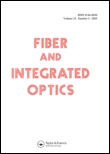
FIBER AND INTEGRATED OPTICS
Scope & Guideline
Fostering Breakthroughs in Optical Technologies
Introduction
Aims and Scopes
- Optical Fiber Sensors:
The journal consistently highlights research on various types of optical fiber sensors, including those based on surface plasmon resonance, acoustic sensing, and hybrid systems. These sensors are critical for applications in environmental monitoring, healthcare, and industrial processes. - Optical Communication Systems:
Research on optical communication, including modulation techniques, error analysis, and signal processing, is a core focus. This includes advancements in fiber optics for telecommunications, enhancing data transmission rates, and improving network resilience. - Integrated Photonic Devices:
The journal covers the development and optimization of integrated photonic devices such as modulators, filters, and amplifiers. These devices are essential for advancing optical networks and enabling high-performance communication systems. - Plasmonics and Novel Materials:
A unique contribution of the journal is its exploration of plasmonic effects and the use of novel materials (e.g., graphene, ITO) in optical applications. This research area supports the development of highly sensitive sensors and efficient optical devices. - Machine Learning and AI in Photonics:
The integration of artificial intelligence and machine learning techniques in optical systems is an emerging focus. This includes the use of neural networks for error-rate estimation and optimization of optical networks.
Trending and Emerging
- Smart and Adaptive Optical Networks:
Recent publications emphasize the development of smart optical networks that utilize adaptive routing and machine learning for enhanced performance and energy efficiency. This trend is crucial for the growing demands of IoT and smart city applications. - Hybrid Photonic Systems:
There is an increasing interest in hybrid systems that combine different technologies, such as plasmonics with fiber optics, to create more efficient devices and sensors. This trend indicates a convergence of various optical technologies for enhanced functionality. - Real-Time Sensing and Monitoring:
A significant trend is the focus on real-time sensing applications, particularly in environmental and structural health monitoring. This includes advancements in fiber optic sensors capable of providing instantaneous data for critical applications. - Integration of AI in Optical Systems:
The application of artificial intelligence and machine learning in optimizing optical systems is rapidly gaining attention. This trend highlights the importance of computational methods in enhancing the functionality and efficiency of photonic devices. - Advanced Modulation Techniques for High-Speed Communication:
Emerging research on advanced modulation techniques, such as frequency octupling and novel microwave photonic systems, is becoming increasingly prominent. This reflects the need for higher data rates and more efficient communication methods.
Declining or Waning
- Traditional Fiber Optic Amplifiers:
There has been a noticeable decline in research focusing solely on traditional fiber optic amplifiers, as newer technologies and approaches (such as integrated amplifiers and dynamic gain management) gain traction. - Basic Theoretical Studies:
The journal seems to be shifting away from purely theoretical studies that do not connect with practical applications. There is a growing emphasis on experimental validation and real-world implications of theoretical findings. - Older Modulation Techniques:
Research on older modulation techniques, such as basic phase or amplitude modulation without novel adaptations, is appearing less frequently as the focus shifts to more advanced and efficient methods.
Similar Journals
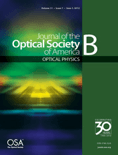
JOURNAL OF THE OPTICAL SOCIETY OF AMERICA B-OPTICAL PHYSICS
Pioneering Insights in Atomic and Molecular PhysicsJOURNAL OF THE OPTICAL SOCIETY OF AMERICA B-OPTICAL PHYSICS, published by Optica Publishing Group, serves as a leading platform for groundbreaking research in the fields of optical physics, atomic and molecular physics, and statistical and nonlinear physics. With an ISSN of 0740-3224 and an E-ISSN of 1520-8540, this esteemed journal has been in circulation since 1984 and is dedicated to advancing the understanding of optical phenomena and related technologies. It holds a commendable position in the academic community, with a 2023 Scopus ranking reflecting its significance—placing it in the top quartile for both Atomic and Molecular Physics and Statistical and Nonlinear Physics. Although it is not an open-access publication, it provides extensive access options to ensure that research is disseminated effectively within the scientific community. This journal is instrumental for researchers, professionals, and students alike, aiming to keep them informed of the latest advancements and trends in optical science. With a convergence of expertise and innovation, JOSA B continues to play a pivotal role in shaping the future of optical research.

Computer Optics
Bridging Disciplines: Where Optics Meets TechnologyComputer Optics is a prominent academic journal dedicated to advancing the field of optics and its integration with computer science, published by the IMAGE PROCESSING SYSTEMS INST of the Russian Academy of Sciences. With an ISSN of 0134-2452 and an E-ISSN of 2412-6179, this journal has been a vital resource for researchers and professionals since it became Open Access in 1987, promoting the free dissemination of knowledge. Based in Samara, Russia, Computer Optics covers a broad range of relevant topics, with its scope spanning atomic and molecular physics, optics, computer vision, and electrical engineering. Although characterized within Q4 and Q3 quartiles in various categories in 2023, its rigorous peer-review process ensures the publication of high-quality research contributions. The journal is crucial for those wishing to explore interdisciplinary approaches that merge practical applications of optics with cutting-edge computer technologies, thereby acting as a bridge between these dynamic fields.
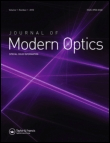
JOURNAL OF MODERN OPTICS
Empowering Researchers in the Realm of LightJOURNAL OF MODERN OPTICS, published by Taylor & Francis Ltd, stands as a prominent bi-monthly journal contributing to the fields of Atomic and Molecular Physics and Optics. With an ISSN of 0950-0340 and an E-ISSN of 1362-3044, this journal aims to disseminate high-quality research that pushes the boundaries of optical science and its applications. Since its inception in 1981, and particularly throughout its publications from 1987 to 2024, the journal has consistently published influential studies that are essential for both academic researchers and industry professionals. Ranked in the Q3 quartile for the 2023 category of Atomic and Molecular Physics and Optics, it has a Scopus ranking of #133 out of 224, indicating its steady presence and relevance in the scientific community. Although it does not offer Open Access options, readers can access its rich repository of literature that delves into innovative optical methods, technological advancements, and theoretical frameworks. The JOURNAL OF MODERN OPTICS is an indispensable resource for those seeking to advance their knowledge and research in modern optical science.

Photonic Sensors
Exploring the Future of Optical SensingPhotonic Sensors is a premier open access journal published by Springer, focusing on the rapidly evolving fields of Photonics, Materials Science, and Optics. Since its inception in 2011, this journal has become a vital platform for disseminating cutting-edge research and innovative applications in photonic technologies, addressing a range of topics from optical sensors to advanced materials for photonics. With an impressive impact factor and categorized in the Q2 quartile across both Atomic and Molecular Physics and Electronic, Optical and Magnetic Materials, it ranks among the top publications in its field (47th out of 284 and 38th out of 224, respectively, in Scopus). The journal actively encourages contributions that not only advance theoretical understanding but also pave the way for practical solutions in various industries. Photonic Sensors is essential reading for researchers, professionals, and students keen on exploring the frontiers of photonic research, with open access ensuring wide visibility and engagement within the scientific community.

Photonics Letters of Poland
Illuminating Innovations in PhotonicsPhotonics Letters of Poland is a prominent journal dedicated to the field of photonics, published by the Photonics Society of Poland. With an ISSN of 2080-2242, the journal aims to foster knowledge and innovation within electronic, optical, and magnetic materials. Although it currently holds a Q4 classification in its category and is ranked in the 21st percentile, it serves as an essential platform for researchers and practitioners to share their findings and advancements. The journal covers a range of topics from foundational research to applied science, highlighting advancements in photonics technologies and their applications. Operating from Warsaw University of Technology, the journal promotes open access to knowledge while ensuring rigorous peer review standards. With its coverage spanning from 2009 to 2024, Photonics Letters of Poland represents a vital contribution to ongoing research within the field, making it indispensable for students, professionals, and academics looking to stay attuned to emerging trends and developments in photonics.

Advanced Photonics
Advancing Knowledge Through Open AccessAdvanced Photonics, published by SPIE-SOC PHOTO-OPTICAL INSTRUMENTATION ENGINEERS, is a prestigious open-access journal dedicated to cutting-edge research in the fields of photonics, optics, biomedical engineering, and material science. Since its inception in 2019, this journal has successfully established itself in the top quartile (Q1) of various categories, including Atomic and Molecular Physics, Biomedical Engineering, and Electronic, Optical and Magnetic Materials, showcasing its critical role in advancing knowledge and innovation within these disciplines. With impressive Scopus rankings—#8 in Biomedical Engineering, #7 in Atomic and Molecular Physics, and #10 in Materials Science—Advanced Photonics serves as an essential platform for researchers, professionals, and students alike, offering a wealth of accessible scholarly content to keep pace with rapid technological developments. The journal not only fosters collaboration and knowledge dissemination within the global scientific community but also emphasizes the importance of open access to ensure that groundbreaking research benefits society as a whole.
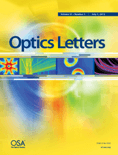
OPTICS LETTERS
Connecting Researchers Through Groundbreaking FindingsOPTICS LETTERS is a premier academic journal published by the Optica Publishing Group, dedicated to advancing the field of optics and photonics. Since its inception in 1977, it has maintained a strong reputation for publishing high-impact research, holding a distinguished Q1 category ranking in Atomic and Molecular Physics, as well as Optics, making it a vital resource for researchers and professionals alike. With an impressive Scopus rank of #55 out of 224 in its field, OPTICS LETTERS continues to shape the discourse and innovation in optical science. Authors benefit from its extensive international reach, while readers gain access to cutting-edge studies that address both theoretical and applied aspects of optics. Although the journal currently does not offer open access options, its rigorous peer-review standards ensure that every publication meets the highest academic criteria, making it an essential journal for anyone looking to stay at the forefront of optical research.

Photonics
Empowering Researchers in the Realm of PhotonicsPhotonics, an esteemed journal published by MDPI, is a leading platform for researchers in the fields of atomic and molecular physics, optics, and instrumentation. Since its inception in 2014, the journal has fostered open access to cutting-edge research, facilitating knowledge dissemination in these dynamic disciplines. With its Q2 ranking in the 2023 Scopus metrics for various categories, including radiology, nuclear medicine, and imaging, Photonics represents a crucial academic resource for professionals and students seeking to advance their understanding and expertise. Located in Basel, Switzerland, the journal plays a pivotal role in bridging theoretical and practical approaches to photonic technologies. Researchers are encouraged to contribute their findings, thereby enriching the journal’s impact and relevance in the global scientific community through collaboration and innovation.
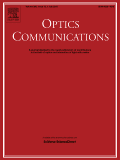
OPTICS COMMUNICATIONS
Exploring the Frontiers of Optical CommunicationOptics Communications, published by Elsevier, is a prestigious international journal that focuses on the dynamically evolving fields of optics and photonics. With its ISSN 0030-4018 and E-ISSN 1873-0310, this journal has made significant contributions to the fields of Atomic and Molecular Physics, Electrical and Electronic Engineering, Electronic, Optical and Magnetic Materials, and Physical and Theoretical Chemistry, consistently ranking in the Q2 quartile across these categories for 2023. The journal, based in the Netherlands, is recognized for its rigorous peer-review process and aims to publish high-quality research articles that advance knowledge and applications in optical communication technologies. Although it operates under a subscription model, the insightful research published here plays an essential role in informing the work of researchers, professionals, and students alike. With a history dating back to 1969 and spanning well into 2025, Optics Communications remains a crucial resource for cutting-edge developments in optics, catering to a global audience dedicated to innovation in this pivotal science.
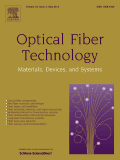
OPTICAL FIBER TECHNOLOGY
Exploring Breakthroughs in Optical Fiber TechnologyOPTICAL FIBER TECHNOLOGY is a premier journal in the fields of atomic and molecular physics, optics, control and systems engineering, as well as electrical and electronic engineering, published by ELSEVIER SCIENCE INC. With an ISSN of 1068-5200 and E-ISSN 1095-9912, it offers a platform for disseminating cutting-edge research and developments in optical fiber technology and its applications. The journal has achieved a notable impact, ranking in the second quartile for multiple categories in 2023, including control and systems engineering and electronic, optical, and magnetic materials. By providing a robust avenue for peer-reviewed articles, OPTICAL FIBER TECHNOLOGY caters to a diverse audience of researchers, professionals, and students dedicated to advancing knowledge and innovation in optics and related fields. This respected journal is particularly suited for those seeking to stay updated on the latest technological advancements and research trends, ensuring its relevance in both academic and industrial contexts.